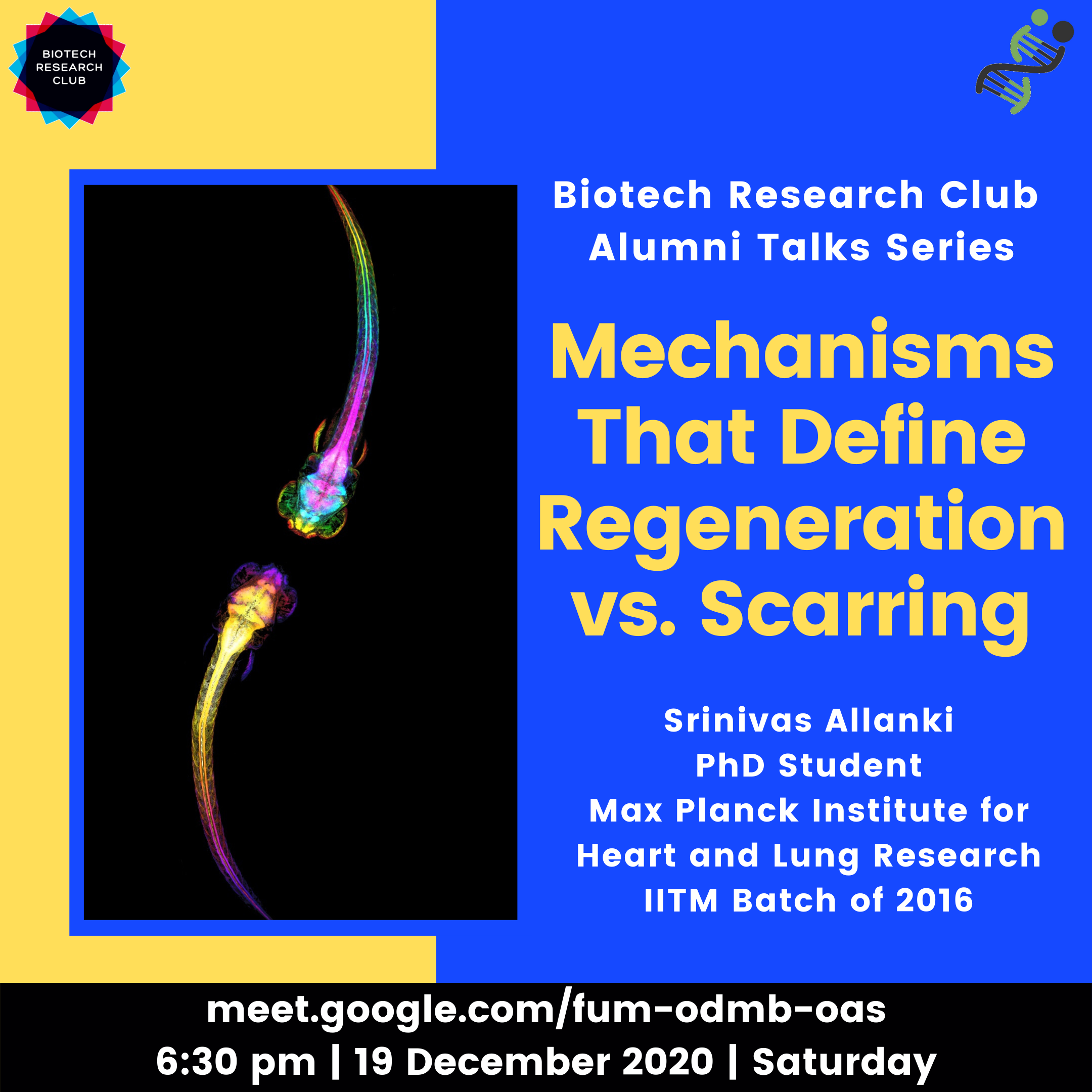Mechanisms that define regeneration vs. scarring.

Abstract
The two diametrically opposed outcomes of tissue damage are fibrosis and scarring, or regeneration and functional repair. Species like zebrafish predominantly display a regenerative program resulting in the functional replacement of injured tissues, including the heart and appendages. Adult mammals predominantly activate a fibrotic program leading to the formation of a functionally inert scar. A key question remains as to how regenerative species escape an excessive fibrotic response. In this study, using combinatorial expression profiling and analyzing regeneration of multiple tissues in five mutants, we identify the first global upstream mechanism of regeneration in zebrafish. Moreover, using lineage tracing and human primary cell culture, we show that this mechanism prevents mammalian-like scarring in zebrafish. These observations open a novel entry point into the question as to why mammals react to tissue damage predominantly by fibrotic scarring over activating a regenerative program.
Biography of the speaker
Srinivas Allanki graduated from the IIT Madras B.Tech. + M.Tech. Biotechnology dual degree program in 2016. He is now a final year Ph.D. student working with Dr. Sven Reischauer and Prof. Didier Stainier at the Max Planck Institute for Heart and Lung Research in Germany. Using the highly regenerative zebrafish as a model system, he studies the fundamental mechanistic differences between regeneration and forming a permanent and functionally inert scar after tissue damage.